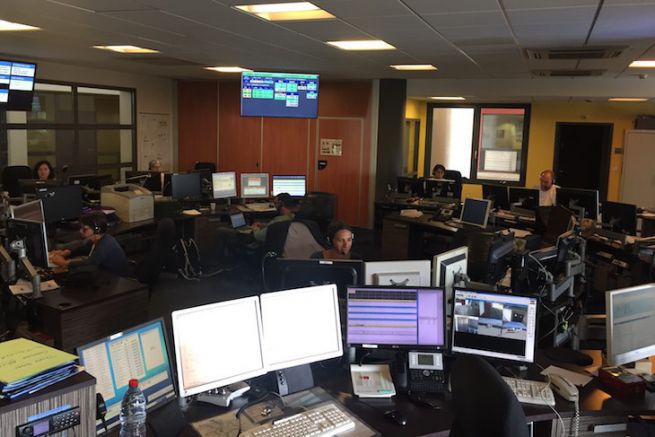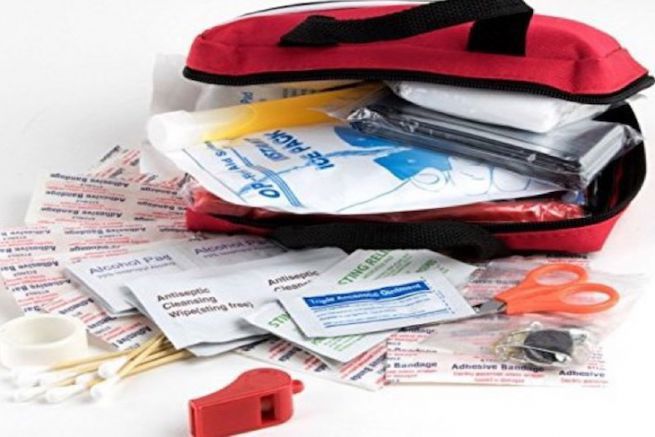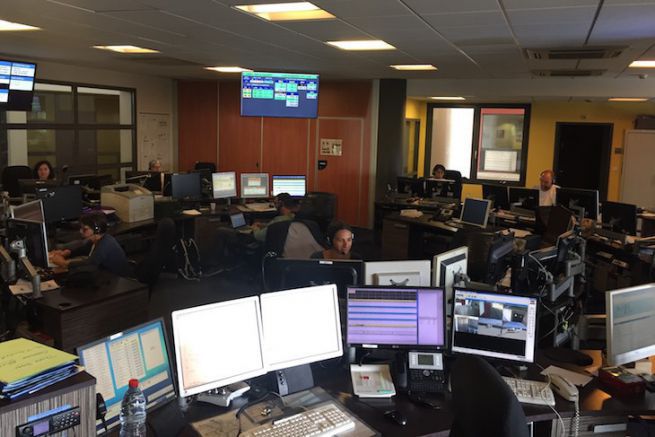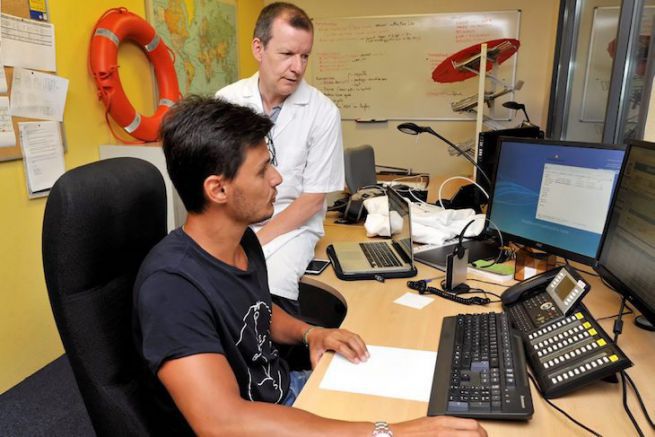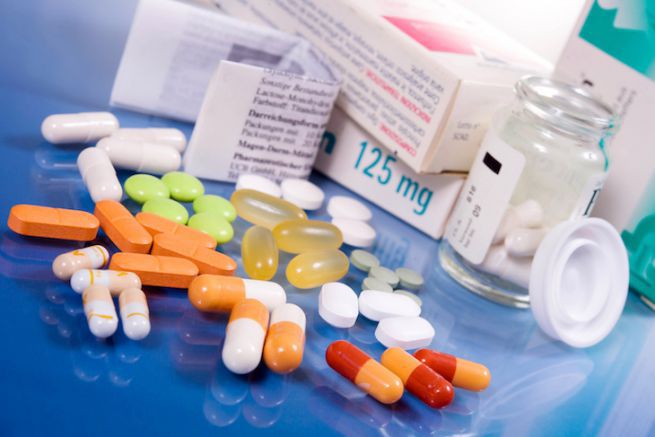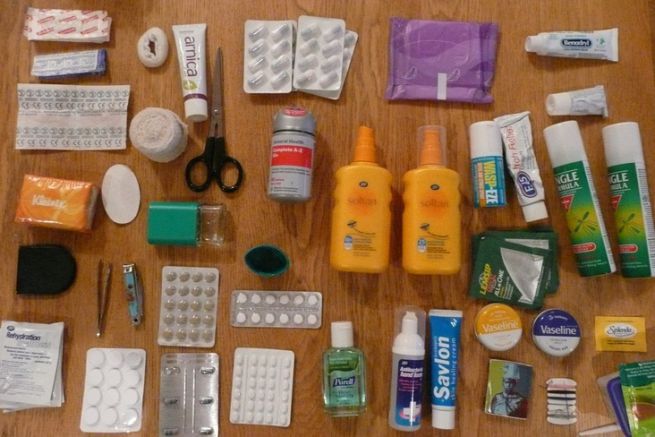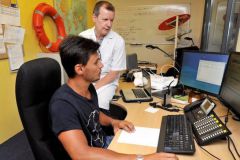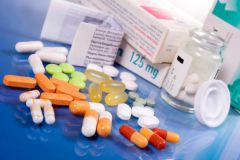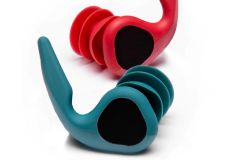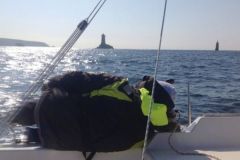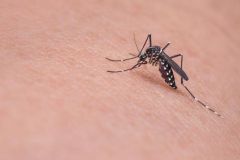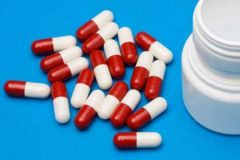The vocation of the CCMM (Centre de Consultation Médicale et Maritime) is to help sea professionals (merchant navy and fishing) in the event of an accident or illness on board. This represents 85% of our activity against 12 to 18% for yachting.
The CCMM (or TMAS: Tele Medical Assistance Service) was created at the end of the Second World War in the 1950s, but it was in its infancy.
In 1983, in a regulatory way, in the professional navy, a text of the international maritime organization specifies that each time a patient on a ship is sick, he must receive a medical consultation. It is thus the opinion of the doctor who will determine the sending of the help.
How does the CCMM work?
In France, there are 3 poles for rescue at sea:
- The CCMM which gives medical advice by telephone
- The CROSS, which determines the best vector to reach or bring the patient ashore (SNSM, French Navy, nautical, air, private or public means...)
The SAMU de Coordination médicale maritime (SAMU côtier) provides a doctor on site on the orders of the CCMM when it proves indispensable. After the treatment, he will direct the patient to the right structure capable of taking care of him according to the pathologies.
Since 1983, the maritime rescue organisation has been placed under the authority of the zone maritime prefect (Mediterranean, Atlantic or Northern Channel). As a CCMM physician, you can therefore work under any authority.
The CCMM is the French reference on the whole territory, the DOM-TOM, but also in the world. In the context of the professional navy, any French ship - or one whose commander is French - will contact the CCMM for linguistic reasons. We therefore respond to all French ships on all the seas of the globe and possibly to foreign ships on all French territorial waters, which do not have a national reference on health at sea, as is the case for Ukrainian ships for example.
At the CCMM - which is a functional unit of the Toulouse SAMU - we provide a 24/7 response. Our doctors diagnose the diseases, but it is the doctors on zone (coastal SAMU) who move in case of need. In total, we are 10 emergency physicians, who have a part of their activity at the CCMM and another part at the SAMU of Toulouse and the ER of the CHU of Toulouse.
We work on two time slots, as in all hospitals:
- Business hours 8 a.m. to 6 p.m
- 6:00 p.m. to 8:00 a.m. on call
During the day, a doctor is entirely dedicated to the CCMM and 90% of our activity takes place in this time slot. In the on-call time slot, the service is provided by a regulating doctor from Centre 15 (SAMU Toulouse). On call, 3 doctors run the SAMU and among these 3, one doctor belongs to the team of 10 emergency physicians of the CCMM to ensure a quality service. Unlike during the day, there is no dedicated doctor as we generally only receive 2 calls per night.
The main objective, unlike the EMS on land, is to diagnose the problem by telephone and keep the person on board the boat. We consider ourselves more like general practitioners or emergency physicians. We prescribe and follow up behind. In 80% of cases, it is possible to keep the patient on board.
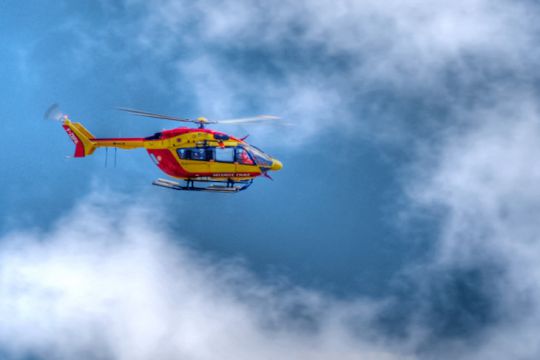
Who is it for?
Our activity was first designed to meet the needs of the professional navy and fishermen. The master or master of a ship is responsible for the health and safety of his crew. He therefore has an obligation to contact a doctor for medical advice. The aim of this medical consultation is to be able to take charge of the patient on board the ship without having to disembark him at the port of call.
The ship's captain must have a medical aid at sea training course of about a hundred hours: first aid, medical semiology, training in a nursing institute to learn the gestures on board, hospital training to learn how to apprehend a patient and simulation). This regulatory training must be revalidated every 5 years or risk losing their diploma.
They are also the obligation to have an equipment on board (a list of 12 pages of 80 to 100 medicines and as much material for the complementary examinations: immobilization, electrocardiogram, urine analysis, glycemia...) and to manage it correctly.
On average 4000 consultations are carried out per year for the benefit of approximately 1900 patients. In 2017, 82% were treated or taken on board, which therefore had no impact in terms of activity for the vessel.
In basic terms, 18% of patients are forced to leave the ship because their pathology means that the means on board are not sufficient or that they need additional examinations or heavier management. We then count:
- 4% diversion
- 5% medical evacuations (in this case, a doctor is not sent on site to evacuate the patient, we are talking about a simple fracture for example).
- 9% medical evacuations (with a doctor).
It is on these 18% of interventions that our partners, the CROSS and SAMU Maritimes, are impacted.
